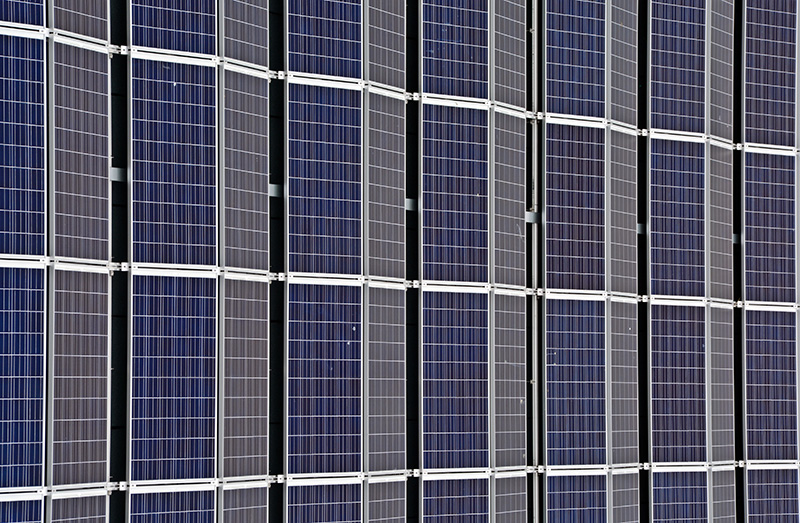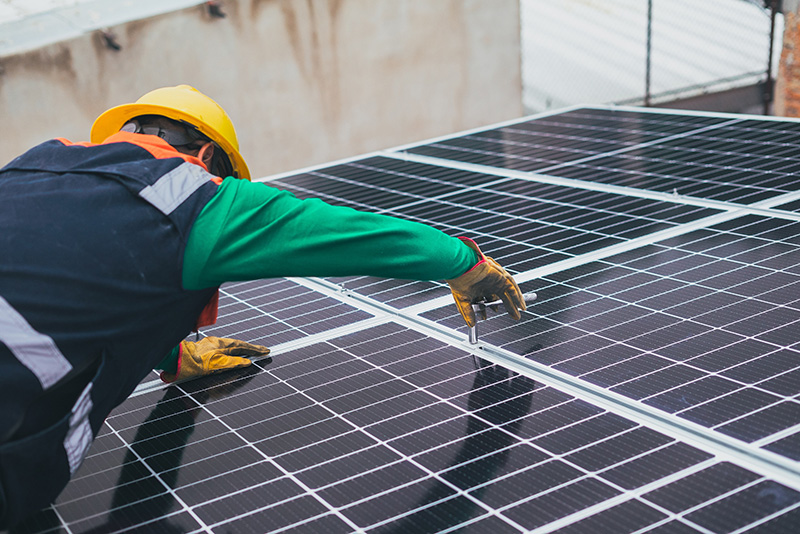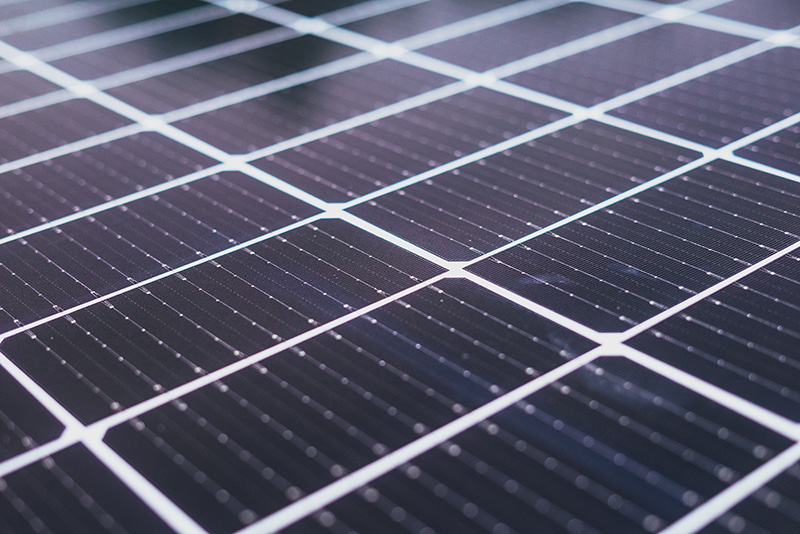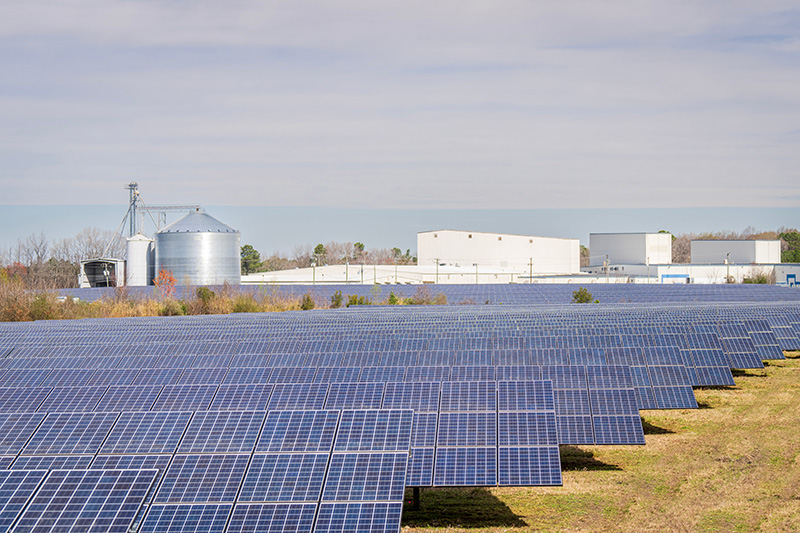What are the main components of solar cell?
Description
The main components of a solar cell include the semiconductor material (often silicon), a p-n junction to create an electric field, anti-reflective coating to maximize sunlight absorption, a metal conductive grid to transport electrons, and encapsulant and backsheet for protection and insulation.

Basic Structure of a Solar Cell
The basic
structure of a solar cell encompasses layers and materials designed to capture
sunlight, transform it into electrical energy through the photovoltaic effect,
and then transport the generated electricity.
The Photovoltaic Effect
The
photovoltaic effect is the phenomenon that allows solar cells to convert
sunlight into electricity. It's the fundamental principle that enables the
functioning of photovoltaic cells. Here's a detailed look at what happens:
- Absorption of Light: When sunlight strikes the solar
cell, photons from the light can transfer energy to electrons in the atoms
of the semiconductor material.
- Creation of Electron-Hole Pairs: This transferred energy knocks
electrons loose from their atoms, allowing them to flow freely within the
material.
- Generation of Electric Current: These free electrons then move
through the material to produce an electric current. They get collected by
conductive metal contacts on the top and bottom of the cell and can be
drawn off as electricity to power anything from a small appliance to a
whole house.
- Importance in Solar Technology: The photovoltaic effect is the basis for solar power, and understanding this phenomenon is key to developing more efficient solar energy technologies.
Layers of a Solar Cell
Solar cells
consist of several layers, each with a specific function in converting sunlight
into electrical energy. The primary layers include:
- N-Type Semiconductor Layer: Contains impurities that add
excess electrons, giving it a negative charge.Forms one side of the p-n junction,
vital for energy conversion in the cell.
- P-Type Semiconductor Layer: In contrast to the N-Type layer,
this layer has a doping process to reduce the number of electrons,
resulting in a positive charge.It forms the other side of the p-n
junction, balancing the energy conversion process.
- Antireflection Coating: This layer helps the cell to
capture more sunlight by reducing reflections.
- Conductive Grid: A network of thin metal fingers
that collects the electrons and sends them to an external circuit.
- Back Sheet and Encapsulation: These provide protection and
insulation for the cell.
These layers work together, allowing the cell to absorb sunlight and efficiently convert it into electricity. The structure of a solar cell is an intricate design that balances efficiency, durability, and cost, and ongoing research in materials and design continues to drive advancements in solar energy technology.

Main Components
Earlier, we
discussed the main components of the system, which include Semiconductor
Material such as Silicon-based Cells and Thin-film Technology, the P-N
Junction, Anti-Reflective Coating, the Metal Conductive Grid, the Encapsulant,
and the Backsheet.
Semiconductor Material
Semiconductor
materials are at the core of solar cells, enabling the conversion of sunlight
into electricity. The main types include:
Silicon-based Cells
These are
the most common types of solar cells, made primarily from silicon, a widely
available and affordable material. There are two main types:
- Monocrystalline Cells: Composed of a single crystal
structure, they offer high efficiency and a sleek appearance but usually
come at a higher cost.
- Polycrystalline Cells: Made from multiple crystal
structures, they are generally less expensive but also less efficient.
Thin-film Technology
Thin-film solar cells are made by depositing one or more thin layers of photovoltaic material on a substrate. They are lighter and more flexible but usually less efficient than silicon-based cells.

P-N Junction
The p-n
junction is a critical component in a solar cell, formed by p-type (positive)
and n-type (negative) semiconductor materials. It's the region where the conversion
of sunlight into electricity occurs:
- Function: It allows the flow of electric
current in one direction and blocks it in the other, facilitating the
movement of electrons from the n-type to the p-type.
- Importance: The design and quality of the p-n
junction affect the cell's efficiency in converting sunlight into usable
electric power.
Anti-Reflective Coating
The
anti-reflective coating is applied to the top surface of the solar cell:
- Purpose: It reduces the reflection of
sunlight, allowing more light to enter the cell, thus increasing
efficiency.
- Benefits: By capturing more sunlight, the
coating helps in maximizing the cell's energy conversion capability.
Metal Conductive Grid
Located at
the top of the solar cell, the metal conductive grid has vital roles:
- Function: It collects the free electrons
generated in the semiconductor and channels them into an external circuit,
converting them into usable electricity.
- Design Consideration: The grid must be designed to
collect maximum current without obstructing too much sunlight from
reaching the semiconductor material.
Encapsulant and Backsheet
These
components provide the final layers of a solar cell:
- Encapsulant: A clear compound that encapsulates
the solar cell, providing protection without interfering with its optical
or electrical properties.
- Backsheet: The outermost layer of the solar
cell, providing structural support and protecting the internal components
from environmental damage.
Together, these main components form a complex system that converts sunlight into electricity. Understanding each part's role and characteristics helps in designing more efficient and cost-effective solar energy solutions.

Types of Solar Cells
We covered
this section earlier, outlining the main types of solar cells: Monocrystalline,
Polycrystalline, Thin-Film, and Multi-Junction, each with its unique
advantages.
Monocrystalline Solar Cells
Monocrystalline
solar cells are made from a single crystal structure, giving them a distinctive
uniform appearance.
- Advantages:
- High efficiency due to the purity
of the crystal structure.
- Long lifespan and durability.
- Aesthetic appearance.
- Applications: Residential and
commercial installations with limited space and a desire for high
efficiency are ideal for these products.
- Recommendation: Companies such as
TongWei provide monocrystalline solar cells known for high performance and
reliability.
Polycrystalline Solar Cells
Polycrystalline
solar cells are made from multiple crystal structures, recognizable by their
speckled blue appearance.
- Advantages:
- Generally less expensive than
monocrystalline cells.
- Slightly lower efficiency but
offers good value for money.
- Suitable for various applications.
- Applications: Often used in larger installations
where cost-effectiveness is a priority.
- Recommendation: TongWei's solar cells include
options in the polycrystalline range, providing an economical choice
without compromising on quality.
Thin-Film Solar Cells
Thin-film
solar cells are created by depositing thin layers of photovoltaic material on a
substrate.
- Advantages:
- Lightweight and flexible.
- Can be integrated into building
materials.
- Lower cost compared to crystalline
cells but also lower efficiency.
- Applications: Suitable for large-scale
installations or places where flexibility and weight are considerations.
- Recommendation: While not specifically offered by
TongWei, many reputable manufacturers specialize in thin-film solar
cells.
Multi-Junction Solar Cells
Multi-junction
solar cells contain multiple p-n junctions, each designed to absorb a different
part of the solar spectrum.
- Advantages:
- Extremely high efficiency by
utilizing a broader range of the sunlight.
- Often used in space and specialized
applications.
- Cutting-edge technology that pushes
the boundaries of solar energy conversion.
- Applications: Primarily found in research,
space, and other high-tech applications.
In summary, the diverse types of solar cells cater to different needs and applications. With advancements in technology and manufacturing, companies like TongWei are leading the way in offering a wide range of solar cell options, from the highly efficient monocrystalline cells to the more economical polycrystalline options. Choosing the right type depends on individual requirements, budget, and the specific application.

Performance Factors
Understanding
the performance factors of solar cells is crucial for selecting the right
technology for specific needs and environments. Key factors include efficiency,
temperature coefficients, and longevity and degradation.
Efficiency
Efficiency
refers to the percentage of sunlight that a solar cell can convert into usable
electrical energy. Here's how it varies among different types:
- Monocrystalline Cells: Typically, around 15% to 20%, with
some advanced models reaching up to 22%.
- Polycrystalline Cells: Generally, ranges from 13% to 16%.
- Thin-Film Cells: Around 10% to 12%.
- Multi-Junction Cells: Can reach efficiencies over 40%,
particularly in specialized applications.
Higher
efficiency means more energy production for a given area, making it a critical
consideration for places with limited space.
Temperature Coefficients
The
temperature coefficient is a measure of how the efficiency of a solar cell
decreases with rising temperature. For most crystalline silicon-based cells,
the coefficient is usually around -0.3% to -0.5% per degree Celsius. This means
that for every degree increase in temperature above 25°C, the efficiency drops
by that percentage.
- Importance: In hot climates, the temperature
coefficient can significantly affect the solar cell's performance, so
selecting a cell with a lower coefficient may be beneficial.
- Variation: Different materials and designs
may have varying temperature coefficients, and this aspect should be
considered based on the local climate and installation conditions.
Longevity and Degradation
Solar cells
gradually degrade over time, affecting their performance. The typical numbers
are:
- Longevity: Most solar cells come with a
lifespan of 25 to 30 years, although they can often continue to function
beyond that at reduced efficiency.
- Degradation Rate: On average, solar cells degrade at
a rate of about 0.5% to 1% per year. Some high-quality models, like those
from renowned manufacturers, may have even lower degradation rates.
- Warranty Considerations: Many manufacturers offer
warranties that guarantee a certain level of performance after a specific
number of years, typically around 80% after 25 years.
These performance factors provide a comprehensive view of what to expect from solar cells over their operational life. By understanding efficiency, temperature coefficients, and longevity and degradation, users can make informed decisions that match their specific needs and environmental conditions. Whether seeking high efficiency or long-term reliability, understanding these factors ensures a more sustainable and effective solar energy solution.

Manufacturing Process
The
manufacturing process of solar cells is complex and involves several key
stages. Here's a detailed overview of each step:
Purification of Silicon
Silicon is
the primary material used in most solar cells. However, it needs to be purified
before it can be used.
- Raw Material: Silicon is extracted from silica
sand.
- Purification Process: It involves multiple steps,
including refining, reduction, and zone melting to achieve the necessary
purity level, usually 99.9999%.
- Result: The purified silicon is the
fundamental building block for creating solar cells.
Ingot Casting
The next
stage is forming the purified silicon into ingots.
- Melting: Technicians melt the silicon in a
crucible at temperatures exceeding 1400°C.
- Casting: They then cast the molten silicon
into ingots using techniques like the Czochralski growth method or the
Bridgman process.
- Cooling: They cool the ingots slowly to
create a crystalline structure, which can be either monocrystalline or
polycrystalline, based on the method applied.
Wafer Slicing
Ingots are
then sliced into thin wafers, which become the substrate for the solar cells.
- Sawing: Operators use precision saws
to cut the ingots into thin wafers, generally around 200 micrometers
thick.
- Polishing: They then polish the
wafers to smooth the surface and prepare them for further processing.
Cell Production
The wafers
undergo several processing steps to become functioning solar cells.
- Doping: Introducing impurities into the
silicon wafers to create the required p-n junction.
- Etching: Removing any impurities or defects
from the surface.
- Coating: Applying anti-reflective coatings
to maximize sunlight absorption.
- Printing: Adding the metal conductive grid
for electron collection.
Module Assembly
The final stage
involves assembling the individual cells into solar modules or panels.
- Arrangement: Workers arrange the specific
pattern of cells, often connecting them in series, to achieve the required
voltage.
- Lamination: Protective materials like glass
and polymers encapsulate the cells.
- Framing:Typically, aluminum frames the
laminated module to provide structural support and aid in mounting.
- Testing and Inspection:Technicians conduct tests on the
completed module to evaluate performance, and perform quality inspections
before shipping.
The entire manufacturing
process for solar cells is a blend of high-tech engineering and precise
craftsmanship. From the initial purification of silicon to the final assembly
of the modules, each step must be meticulously executed to create a product
capable of converting sunlight into electricity efficiently and reliably.
Manufacturers continuously innovate to make this process more sustainable and
cost-effective, contributing to the growing accessibility of solar energy
worldwide.
